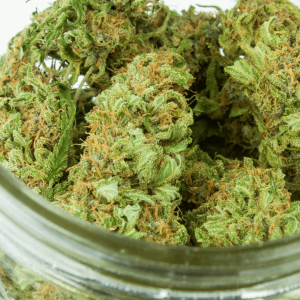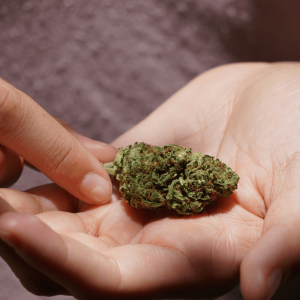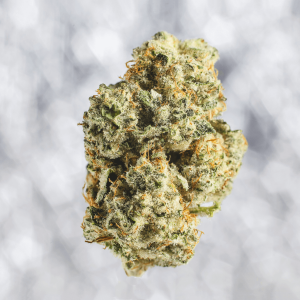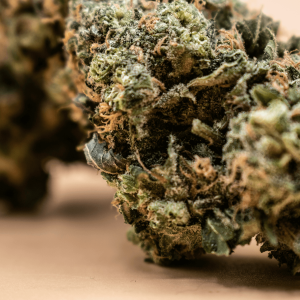Understanding weed measurements is crucial for beginners and experts alike. After all, a thorough understanding can help you to stay legal, achieve your desired effects, and manage your budget.
From grams for small quantities to ounces and pounds for larger amounts, the cannabis industry uses specific measurements. This blog aims to simplify cannabis quantities for you, providing a comprehensive guide through the complex aspects of cannabis measurements.
We’ll discuss everything from basic units for small purchases to larger quantities for more committed stoners, including how to convert between these sizes. Let’s get started!
The Basics of Weed Measurements
It’s important for everyone, from casual users to seasoned enthusiasts, to know the basic measurements in the cannabis world. Here’s an explanation of the most common quantities you’ll come across:
- Gram: The base unit for cannabis measurements. A gram is perfect for those looking to sample different strains or for a casual use. Most joints contain roughly 0.3 to 0.5 grams of weed.
- Eighth: An eighth refers to 1/8 of an ounce, approximately 3.5 grams. It’s one of the most popular quantities purchased, providing a balance between getting a good amount of cannabis without having to spend too much. Ideal for weekend smokers.
- Quarter: This term describes 1/4 of an ounce or about 7 grams of cannabis. A quarter is suitable for regular users who know what they like and prefer to stock up to avoid frequent purchases.
- Half Ounce: A half equals 1/2 of an ounce, translating to about 14 grams. It’s a go-to option for heavy users or those planning to share with friends over an extended period.
- Ounce: An ounce is a significant quantity, about 28 grams, often purchased by long-term users or those preparing for a large smoke session with friends. Buying by the ounce is usually more cost-effective than smaller quantities.
- Pound: Weighing in at 16 ounces, or about 448 grams, a pound of weed is a substantial amount, often beyond the scope of personal use. Typically, this measurement is seen in the context of distribution or very heavy medicinal use.
Each of these measurements serves different purposes and caters to various needs within the cannabis community. Whether you’re looking to experiment with a new strain or ensure you’re well-stocked for the foreseeable future, understanding these basic units of weed measurements is crucial.

Gram: The Starting Point
The gram is the ideal unit for measuring cannabis and a great starting point for newcomers. It allows you to explore different strains without making a large investment. It’s perfect for beginners or casual users interested in discovering their preferred strain among the many available.
With a gram of cannabis, you have several options for use. You can roll it into two or three small joints or opt for a single larger one, depending on your preference. Many dispensaries also offer pre-rolled joints, edibles, and concentrates like wax or oil in gram portions, making it easy to experiment with various consumption methods without spending too much.
Understanding how to buy cannabis by the gram can help you make cost-effective decisions.
Eighth: A Popular Choice
For many cannabis users, an eighth is the sweet spot in terms of quantity. An eighth of an ounce, equating to approximately 3.5 grams, strikes the perfect balance between having enough weed for several sessions without committing to a larger, more expensive purchase.
This measurement is particularly favored for its versatility and practicality, catering to those who enjoy cannabis on a more than occasional basis but aren’t heavy users.
Within the dispensary, eighths are commonly found in flower form, providing enough product for multiple rolls or a few generous bowls. Beyond flowers, many dispensaries also package edibles and concentrates in equivalent gram measurements to eighths, offering a variety of consumption methods at this popular weight.
Whether you’re a weekend smoker or someone who enjoys a nightly session, purchasing cannabis by the eighth allows for quality and quantity control, making it a preferred choice among a broad spectrum of users.

Quarter Ounce: Doubling the Eighths
A quarter pound, known as 1/4 of an ounce, translates roughly to about seven grams, effectively doubling what you get with an eighth. This increased quantity is particularly appealing for those who have moved past the experimentation phase and have a clear preference for specific strains or consumption methods.
Financially, opting for a quarter often leads to price benefits, as the cost per gram typically decreases compared to purchasing two separate eighths. This makes quarters a smart choice for regular cannabis consumers looking to balance their budget with their consumption needs.
Not only does it reduce the frequency of purchases, but it also provides the opportunity to enjoy your favorite strains for longer periods, striking a comfortable balance between affordability and convenience.
Half Ounce: Stepping Up
A half, representing 1/2 of an ounce, is a considerable step up in the quantity of cannabis, equating to about 14 grams. This size is particularly favored by those who have a deep understanding of their consumption habits and prefer having a substantial amount on hand.
Buying in halves is cost-effective for frequent users, as the price per gram decreases significantly when purchasing larger amounts. It’s a great option for someone looking to minimize their trips to the dispensary or for those who often share with friends during smoke circles.
Choosing a half allows for a blend of convenience and value, ensuring you have a steady supply without the constant need to re-up.
Ounce: The Bulk Purchase
Purchasing an ounce of weed indicates you’re knowledgeable about selecting strains, showing that you have considerable experience with your preferences.
An ounce, comprising approximately 28 grams, is often the choice for seasoned users who understand their preferences and consumption pace. This bulk purchase is notably cost-effective; the price per gram drops substantially when buying by the ounce, offering the best value for long-term users.
Opting for an ounce allows for a considerable reduction in the frequency of purchases, which could make it a budget-friendly option. It’s also ideal for social smokers planning large gatherings, ensuring there’s enough supply to go around without the need for constant restocking.
Overall, buying by the ounce is a wise decision for those seeking to balance their budget with their cannabis consumption needs efficiently.
Pounds: For the Heavy User
Purchasing cannabis by the pound is a practice that ventures beyond the scope of personal use (and the legal limit), entering the world of distribution or use among a medical marijuana patient.
A pound of weed translates to a staggering 16 ounces, making it a significant bulk purchase. And in case you’re curious how many grams are found within a pound, you’re not alone! A pound is approximately 448 grams.
In terms of legality, buying cannabis in such large quantities is heavily regulated and, in many regions, restricted to licensed dispensaries or producers due to its association with distribution activities.
Typically, pounds are purchased by those with a legal permit for large-scale cultivation or distribution, as well as by a medical patient who requires a continuous, substantial supply for their treatment. This size is rarely seen in a casual or recreational context due to its immense volume and the legal implications of possessing cannabis at such a scale.
Breaking Down Measurements Further
Understanding smaller measurements such as teenths and dubs can be just as crucial for certain consumers.
A “teenth,” casually derived from “sixteenth,” represents a sixteenth of an ounce, approximately 1.75 grams, catering to those looking for more than a gram but less than an eighth. The term “dub” generally refers to $20 worth of cannabis, which historically equated to approximately a gram, depending on the quality and region.
These smaller measurements offer flexibility for casual users or those on a budget, allowing for a more nuanced control over quantity and expense. Whether you’re a new stoner exploring different strains or a more experienced user with specific needs, understanding these subtler gradations can enhance your purchasing decisions and consumption experience.

Metric vs. Imperial Measurements
The way cannabis is bought and sold globally largely depends on the measurement system used – metric or imperial.
The metric system, used by most of the world, is simple, using grams and kilograms which easily scale because they’re based on tens. The imperial system, mainly used in the USA, uses ounces and pounds, which can seem more complex due to its non-decimal structure.
Despite the global prevalence of the metric system, the cannabis industry often leans towards imperial measurements. This is largely due to historical and cultural factors, with the U.S. having a significant influence on cannabis culture.
Measurements from the illegal market have carried over, and even as cannabis becomes legal in more places, these imperial measurements remain popular among consumers due to tradition and preference.
Measurement Tools and Techniques
Enjoying cannabis properly requires precise measurements for a great experience and to comply with regulations.
Understanding the correct tools and techniques can significantly enhance your experience, ensuring the perfect dose each time and maximizing value.
Digital Scales for Accurate Measurement
Digital scales have become essential in the cannabis industry, providing the precision necessary for accurate dosing and transactions. These scales can measure up to a tenth of a gram for precise measurement, ensuring accurate exchanges.
Many are designed to be discreet and portable, making them easy to store. When choosing a digital scale, select one that allows for calibration to maintain accuracy, and a backlit display is a bonus, enabling use in any lighting condition.
Tricks for Measuring without a Scale
While a digital scale is the most accurate way to measure cannabis, there are instances when one might not be available. In such cases, there are a few tricks that can provide rough estimates:
- Using a Ruler: By understanding that an inch on a ruler is roughly equivalent to 2.5 centimeters, you can use the length and width of your cannabis to estimate its weight based on known averages.
- Visual Comparisons: Familiarize yourself with what certain amounts look like. For instance, a gram of cannabis roughly equates to the size of a quarter coin, while an ounce can be as large as a large apple.
- The Penny Balance: A U.S. penny weighs exactly 2.5 grams. If you have a makeshift balance, you can compare the weight of your cannabis to pennies for a rough approximation.
- Volume Measurements: Especially for ground cannabis, knowing that a teaspoon equates to about 2.5 grams can provide a ballpark figure for measurement without a scale.
It’s crucial to remember, however, that these methods will never be as accurate as using a digital scale, and should only be used as a last resort or for casual estimations.

Buying Tips and Tricks
When looking to get the best value for your cannabis purchase, understanding how much weed is defined by each measurement is key, but knowing how to read and understand dispensary labels can be equally important.
Dispensaries often list THC and CBD percentages, strain type (indica, sativa, hybrid), and weight in grams or ounces. Always check the packaging date to ensure freshness, as THC content can degrade over time.
Compare prices per gram or ounce among different strains to find the most cost-effective option, keeping in mind that higher THC or CBD percentages might not always equate to a better experience for you.
Remember to inquire about discounts for bulk purchases or loyalty programs. Many dispensaries offer special deals that could save you a lot of money over time.
By following these tips, navigating dispensary options becomes easy, and it’s all about finding the right match for your needs and budget.
Storage and Preservation Based on Quantity
Proper storage and preservation of cannabis are critical to maintaining its potency, flavor, and quality over time. Different quantities of cannabis may require different storage methods to ensure they remain fresh and effective.
Here, we explore the best practices for storing various amounts of cannabis, from small personal use quantities to larger amounts meant for extended use.
Grams
For storing small amounts of cannabis, such as a few grams, air-tight containers or zip-lock bags are ideal. These keep air exposure to a minimum, preserving the cannabinoids and terpenes responsible for the weed’s effects and flavor.
Including a small humidity pack in the container can help maintain the perfect moisture level, preventing your cannabis from drying out or becoming too moist and susceptible to mold.
Ounces
When storing larger quantities like an ounce, glass jars with air-tight seals become essential. Mason jars or specifically designed cannabis storage containers are great options. These jars should be kept in a cool, dark place to protect the cannabis from light exposure, which can degrade its quality.
For long-term storage, consider vacuum sealing the cannabis within the jar to lock out air completely.
Pounds
For those needing to store very large amounts, such as a pound or more, professional-grade storage solutions become necessary. Large, air-tight containers designed for bulk storage can be used, combined with humidity control packs to maintain an optimal environment.
These containers should be stored in a cool, dark, and dry place. A lock or security feature may also be important for both safety and compliance with local regulations on cannabis storage.
No matter the quantity of cannabis, making sure that it’s stored properly will help preserve its quality and extend its shelf life. Using the right tools and accessories for each measurement is key to successful cannabis storage and preservation.
Conclusion
Understanding weed measurements is crucial for both beginners and experienced cannabis users. It ensures you get a consistent experience, lets you know exactly what you’re purchasing, and helps keep your supply fresh.
Mastering the perfect dose can be straightforward with a digital scale or some estimation techniques in a pinch. Always opt for fresh cannabis and don’t hesitate to ask questions at your dispensary to get the most out of your buy.
Following these suggestions will enhance your cannabis experience, making it safer and more enjoyable every time.

Weed Measurement FAQs
1. How accurate do I need to be with weed measurements for personal use?
For personal use, especially if you’re rolling joints or packing bowls, a little flexibility in your measurements usually won’t make a significant difference. However, for edibles and concentrates, precision becomes much more critical to ensure consistent potency and to avoid overconsumption. Using a digital scale can help achieve the desired accuracy.
2. Can the density of cannabis affect how much fits in a grinder or storage container?
Yes, the density of cannabis can significantly impact how much you can fit in a given space. Denser buds will occupy less volume, meaning more weight in less space. This is an important consideration when measuring cannabis by eye or volume, as different strains and qualities of cannabis can vary widely in density.
3. What Does 14 Grams of Weed Look Like?
Visualizing 14 grams of weed, commonly referred to as a “half ounce,” can vary significantly due to the density and structure of the cannabis buds. Typically, 14 grams will fill two large-sized Mason jars or might appear as a small, dense pile that comfortably fits in the palm of an adult’s hand.
When spread out, it could cover a standard-size dinner plate without overlapping edges, presenting a more tangible sense of its volume. Imagine taking a generous handful of popcorn; that’s about the size you’d expect for 14 grams of loosely packed, fluffy buds.
The appearance can be deceiving since denser buds might offer the same weight in a seemingly smaller volume, emphasizing the importance of accurate weighing methods for precise measurement.

 Rewards
Rewards




